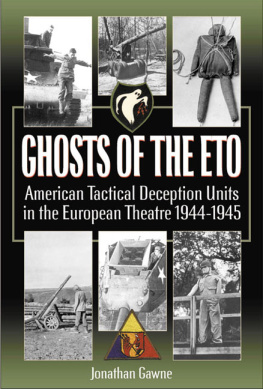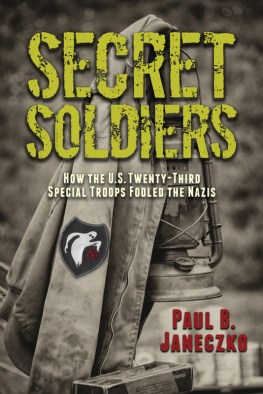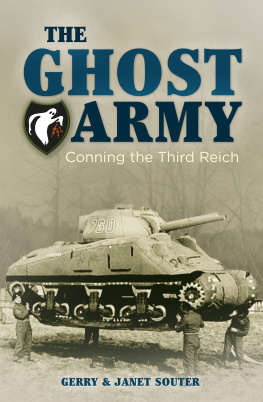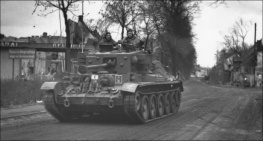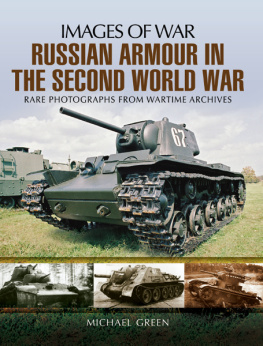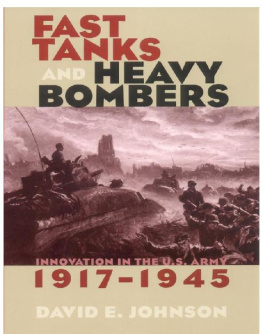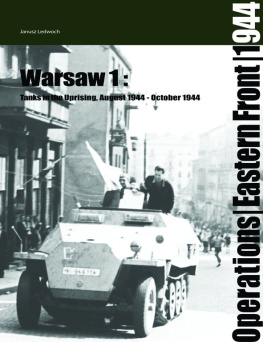PRAISE FOR THE GHOST ARMY OF WORLD WAR II
World War II was the greatest event in the history of mankind, and although it has been the subject of countless books, documentaries, and academic courses, there is so much still to know. The Ghost Army of World War II describes a perfect example of a little-known, highly imaginative, and daring maneuver that helped open the way for the final drive to Germany. It is a riveting tale told through personal accounts and sketches along the wayultimately, a story of success against great odds. I enjoyed it enormously.
TOM BROKAW
Journalist and author of The Greatest Generation
Brings to life a whale of a tale of World War II innovationone laced with brash creativity. The notion of a special Army unit using dummy equipment, mobile loudspeakers, officer impersonations, and foul rumors to deceive German forces seems outlandish, but the tactics worked. This theater-goes-to-war story is finely told and beautifully illustratedan important contribution.
GORDON H. NICK MUELLER
President and CEO, The National WWII Museum
The Ghost Army of World War II is a veritable hive of fascinating information based on sound research. Its apparent that Rick Beyer and Elizabeth Sayles enjoy the subject with a level of dedication and passion that warms the hearts of irascible military historians such as me. I heartily recommend this book.
MARTIN KING
Author of Voices of the Bulge and The Tigers of Bastogne, consultant to the History Channel
A fascinating read, and a fun one as well. Audacious is the right word for this daring sideshow that protected Pattons flank and other American soldiers. The original art is superb and frequently humorous. A well-crafted account of the amazing combination of shenanigans and tremendous courage that characterized the Twenty-Third Headquarters Special Troops.
LIBBY OCONNELL
Chief historian of the History Channel, author of The American Plate: A Culinary History in 100 Bites
Military deception is much like a successful magic trick. It is about fooling people into believing that something is happening that isnt.

Inflatable dummy tanks and trucks set up near the Rhine River in Germany, 1945. Even the tire tracks were faked.


INTRODUCTION
THE CECIL B. DEMILLE
WARRIORS
Its complement was more theatrical than military.
It was like a traveling road show that went up and down the front lines.
Official History of the 23rd Headquarters Special Troops

T hey drove east from Paris, leaving the City of Light behind and hurrying into the inky darkness that soon enveloped the blacked-out French roads. The convoy of half-tracks, trucks, and jeeps moved relentlessly through the night, stopping only briefly before resuming the journey in the gray dawn light. By midday on September 15, 1944, the men of the Twenty-Third Headquarters Special Troops had traveled 250 miles and were moving into position along the Moselle River, near the border between Luxembourg and Germany. The weather was cold and rainy, presaging a winter that would be called the worst in forty years. The GIs were understandably edgy: the German lines were said to be less than two miles to the east, just across the river. Were the only outfit on this part of the front except for one cavalry squadron spread very thinly, wrote Sergeant Bob Tompkins in his diary. No one knows where [the] front is. They had been rushed here from Paris to perform a vital but dangerous job code-named Operation Bettembourg.
Their mission was to put on a show, with the German Army as the audience.
They were plugging a hole in General George Pattons line by pretending to be the Sixth Armored Division, with all its tanks and might. But the men of the Twenty-Third had no tanksno real ones, anywayand precious little might. In fact, they carried no weapon heavier than a .50-caliber machine gun. This cast of artists, designers, radio operators, and engineers was equipped instead with battalions of rubber dummies, a world-class collection of sound-effects records, and all the creativity the soldiers could muster. They understood all too well that their own lives depended on the quality of their performanceif the Germans saw through their deception, they could attack and overrun the small, lightly armed unit. There was nothing but our hopes and prayers that separated us from a panzer division, Lieutenant Bob Conrad recalled. But thousands of other lives were at stake as well. If the Germans realized how thinly held the sector was, they could break through and attack Patton from the rear.

All the different dummy vehicles used by the Ghost Army
In other words, it was just another day in the life for the men of what became known as the Ghost Army.
This top-secret unit went into action in June 1944, a few weeks after D-Day. For the next nine months they conducted deception missions from Normandy to the Rhine River. Its complement was more theatrical than military, noted the units official US Army history. It was like a traveling road show that went up and down the front lines impersonating the real fighting outfits.
What they did was so secret that few of their fellow American soldiers even knew they were there. Yet they pulled off twenty-one different deceptions and are credited with saving thousands of lives through stagecraft and sleight of hand. Like actors in a repertory theater, they would ask themselves: Who are we this time? Then they would put on a multimedia show tailored to that particular deception, often operating dangerously close to the front lines. They threw themselves into their impersonations, sometimes setting up phony command posts and masquerading as generals. They frequently put themselves in danger, suffering casualties as a consequence. After holding Pattons line along the Moselle, they barely escaped capture by the Germans in the Battle of the Bulge, and in March 1945 they performed their most dazzling deception, misleading the Germans about where two American divisions would cross the Rhine River.
Their mission bordered on the surreal. But that is only part of their amazing story. The artists in the unit, recruited to handle visual deception, used their spare time to chronicle the units adventures in thousands of paintings and drawings, creating a unique and poignant visual record of their war. After coming home many took up postwar careers as painters, sculptors, designers, illustrators, or architects. A surprising number went on to become famous, including fashion designer Bill Blass, painter and sculptor Ellsworth Kelly, and wildlife artist Arthur Singer.

Some of the eleven hundred men of the Ghost Army
Thirty years after the war, when the details of their story were still being kept secret, a United States Army analyst who studied their missions came away deeply impressed with the impact of their illusions. Rarely, if ever, has there been a group of such a few men which had so great an influence on the outcome of a major military campaign.
Next page

